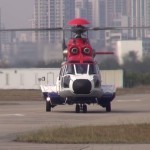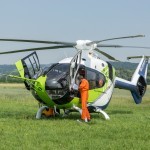
Part 4: to Yangon, Bangkok, Hanoi, attempting Macau
After landing, you refuel. It will not only be easier to start early the next day, but it will also lower the condensation in the fuel tank.

After landing, you refuel. It will not only be easier to start early the next day, but it will also lower the condensation in the fuel tank.

July 07th, 2015. Airbus Helicopters presents its brand new prototype of a modified H135, featuring extremely low noise in flight. A reduction of no less than 10 EPNdB (perceived noise), corresponding to a reduction by 90 percent of the noise of a standard H135 helicopter. (More information on icao.int, wikipedia.org/EPNdB, or wikipedia.org/Loudness. To refresh your logarithmic knowledge on the dB, check this.)
The aircraft displays an unusual shape to those familiar with the product family: T-tail horizontal stabilizer, new rotor blades… Continue reading »